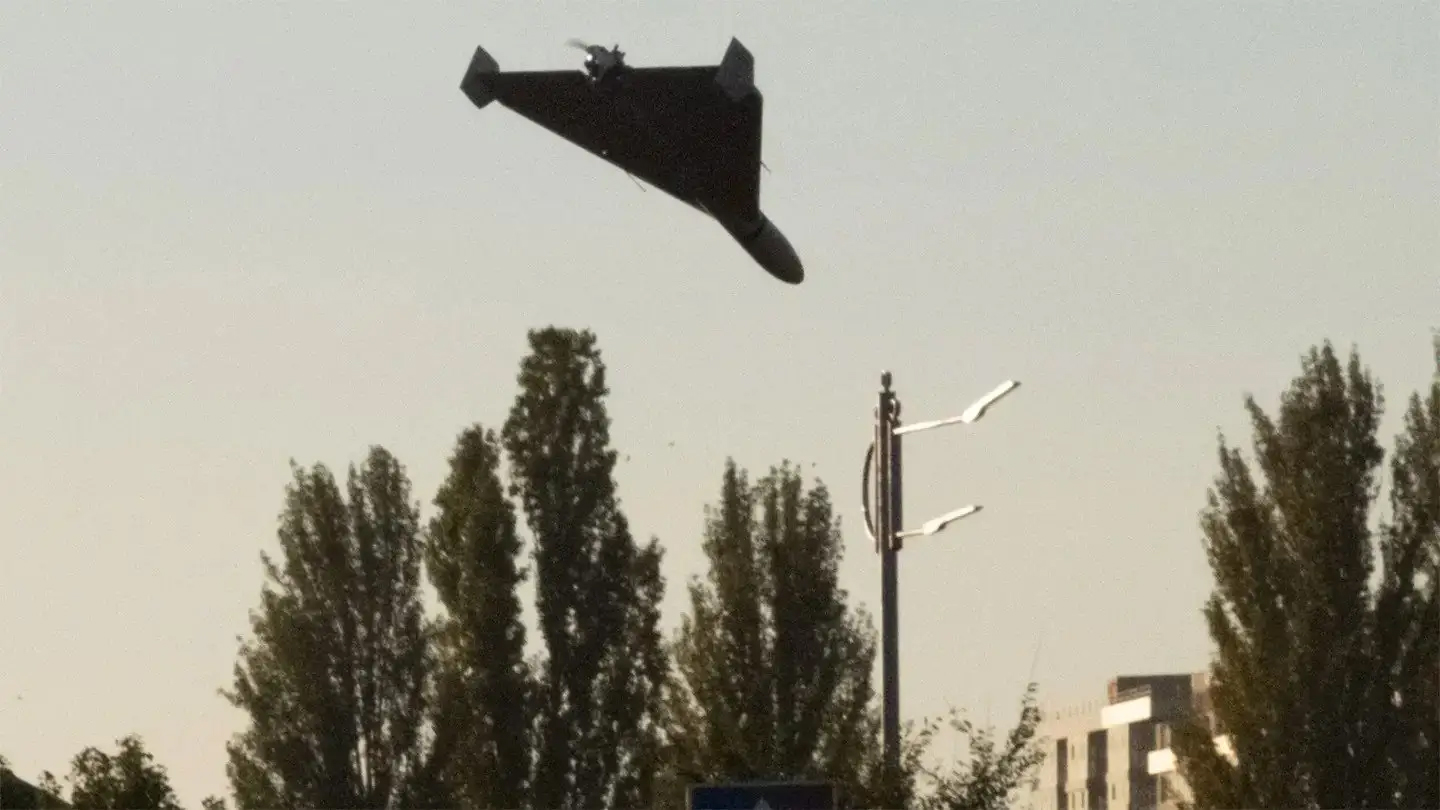Russia is stepping up its attacks with Shahed-136 drones and is using a new generation of those weapons featuring warheads packed with tungsten balls, Ukrainian officials say.
Overnight Thursday, Russia attacked with 44 Shaheds drones, all but 10 of which were destroyed in the air, the Ukrainian Air Force claimed on its Telegram channel.
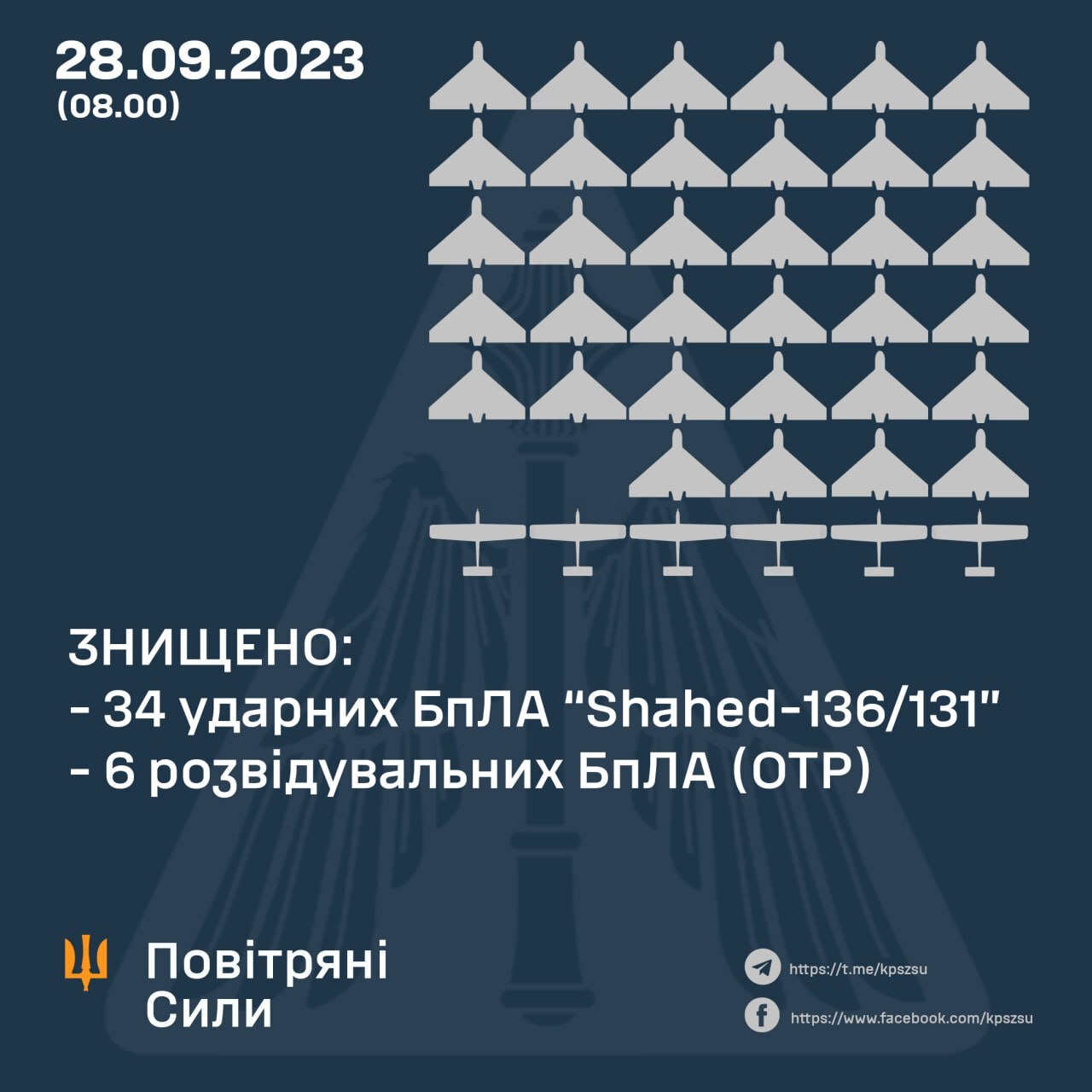
That’s the largest number of those drones used in a single attack this month, Reuters reported.
“It may be a record,” Mykolaiv Oblast Gov. Vitalli Kim said Thursday on his Telegram channel.
“Russians are using Shahed drones more intensively,” Ukrainian Air Force spokesman Yuri Ignat said during a recent national television broadcast. “Unfortunately, Russia now has the opportunity to manufacture its own. This is a new challenge against which we will respond. It is likely they will start attacking energy infrastructure again.”
In recent days, Russia has used the Shaheds to conduct raids across Ukraine, but especially against port facilities on the Black Sea and Danube River, killing several civilians and damaging port and grain facilities as well as a landmark hotel.
Thursday’s attacks were far less effective than previous ones, Oleh Kiper, head of the Odesa regional military administration said on his Telegram channel.
“No hits and destruction,” he said. “There are no casualties. Only a few small [areas] of ignition of dry grass were recorded as a result of falling fragments” of the drones, which were downed by air defenses, he said.
In addition to using an increased number of these drones, Russia is using new models, Ukrainian officials say. That’s based on findings from the recovery of recently downed Shaheds.
The latest generation of these drones were found to have new warheads, engines, batteries, servomotors and bodies, Capt. Andriy Rudyk, a representative of Ukraine’s Center for the Research of Trophy and Prospective Weapons and Military Equipment, said Thursday at a press briefing.

The new warheads contain tungsten balls for fragmented shrapnel, which is an upgrade over the Shahed-136’s original blast fragmentation warhead configuration. Tungsten balls are also a design feature of U.S.-manufactured Guided Multiple Launch Rocket Systems (GMLRS) munitions fired by the M142 High Mobility Artillery Rocket Systems, or HIMARS and the M270 Multiple Launch Rocket System (MLRS) provided to Ukraine. Driven by the force of the explosives, fragments, like ball bearings, widen the destructive area of the warheads and tungsten’s high density penetrates better into whatever they hit, and do so with more force.
Rudyk did not say what, if any, impact adding the tungsten balls to the Shahed warheads is having and none of the previously quoted Ukrainian officials even mentioned the new generation of drones.

Much of the rest of the changes do not alter the general characteristics of the drones, but appear to have been engineered to reduce the manufacturing cost to increase production volume, Rudyk said.
The newer Shaheds have MicroPilot UAV Flight Control Systems MD550 gas-fueled engines instead of the Mado MD550 gas-fueled engines, said Rudyk.
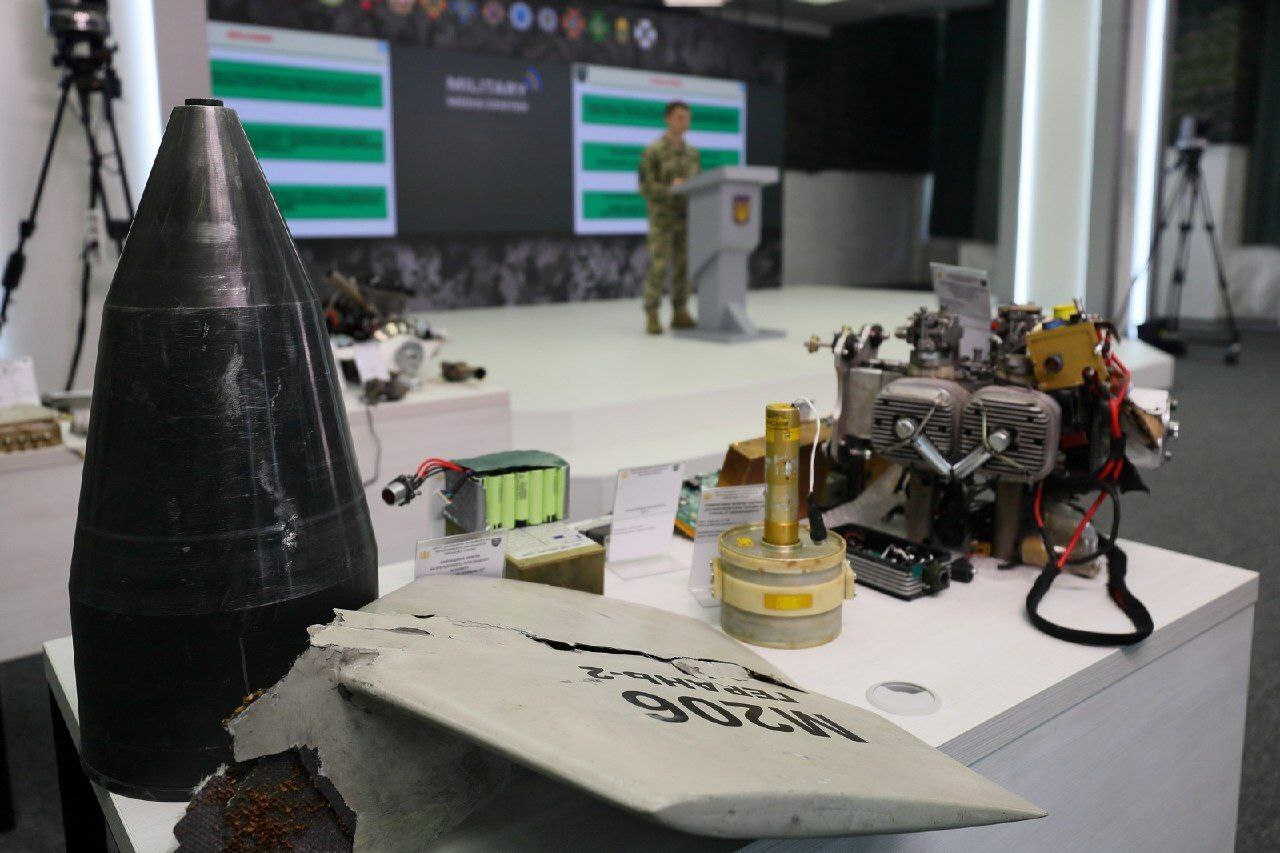
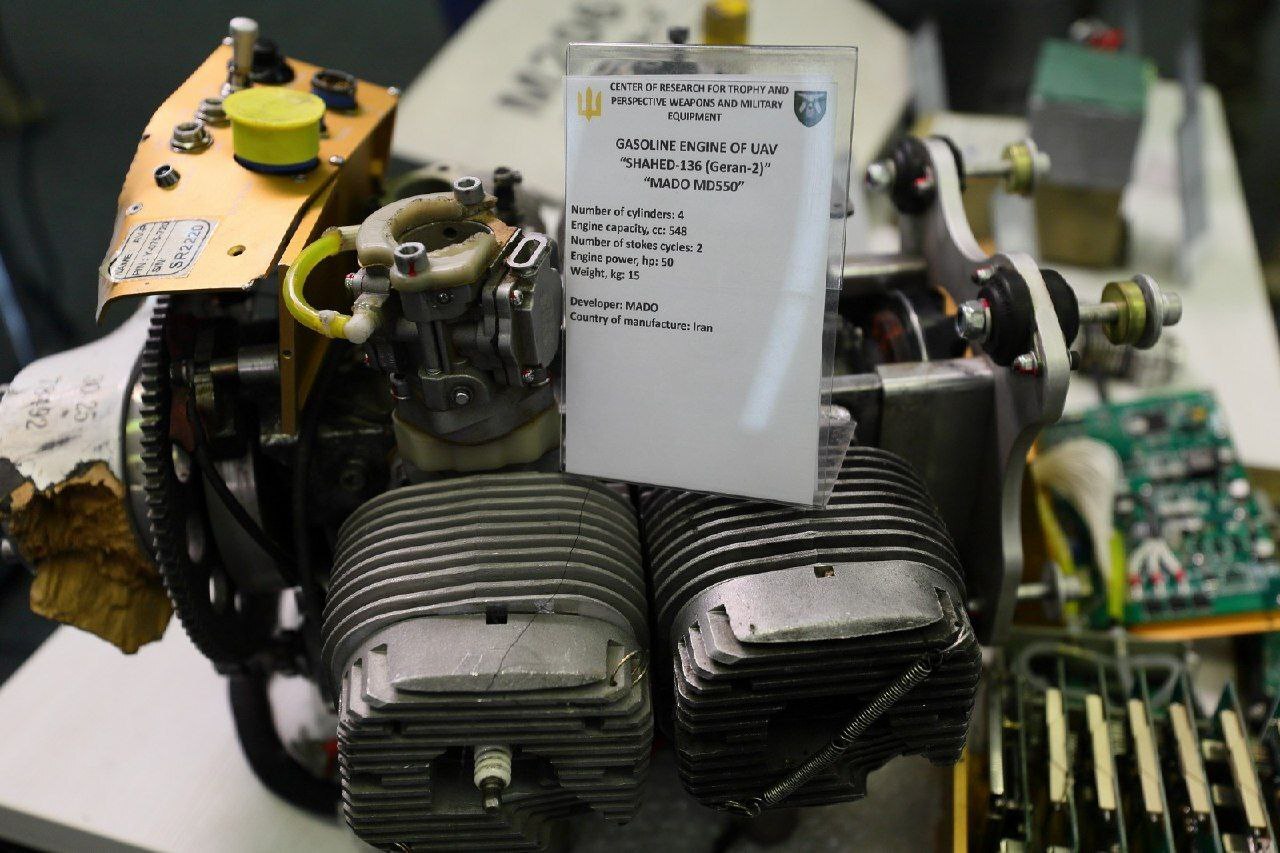
Rudyk did not address the source of the components. However, the MicroPilot engines are made in China while the Mado engines are made in Iran, according to the Institute for Science and International Security.
On Wednesday, The Guardian published a story based on a Ukrainian document that showed drones used in the latest attacks on Ukrainian cities were “filled with European components.”
The publication cites a 47-page document it obtained that was submitted by Ukraine’s government to the G7 governments in August. That document claimed there were more than 600 raids on cities using unmanned aerial vehicles (UAVs) containing Western technology in the previous three months.
According to the document, “52 electrical components manufactured by Western companies were found in the Shahed-131 drone and 57 in the Shahed-136 model, which has a flight range of 2,000km (1,240 miles) and cruising speed of 180kmh (111mph).”
There were five European companies, including a Polish subsidiary of a British multinational company, named as the original manufacturers of the identified components.
“Among the manufacturers are companies headquartered in the countries of the sanctions coalition: the United States, Switzerland, the Netherlands, Germany, Canada, Japan, and Poland,” the document obtained by The Guardian reported.
Aside from the different engines, the latest Shaheds now use the Russian-made Kometa digital antennas for satellite navigation receivers in the navigation system designed to reduce the ability of enemy jamming. It’s the same system Russia uses in its UMPK glide bombs.
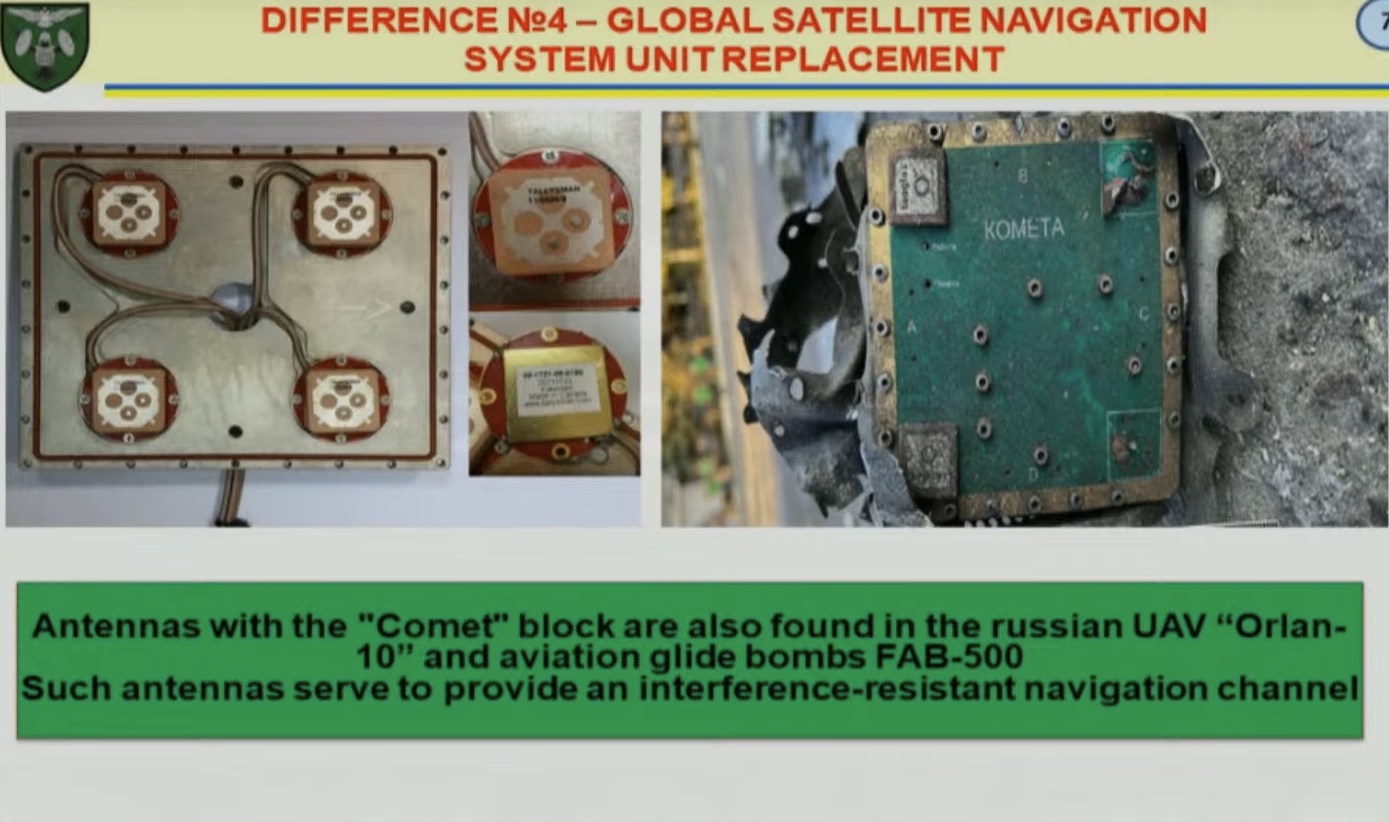
They also use the new KST X30-12-165 servomotor, said Rudyk, who did not specify the make of the old servomotor.
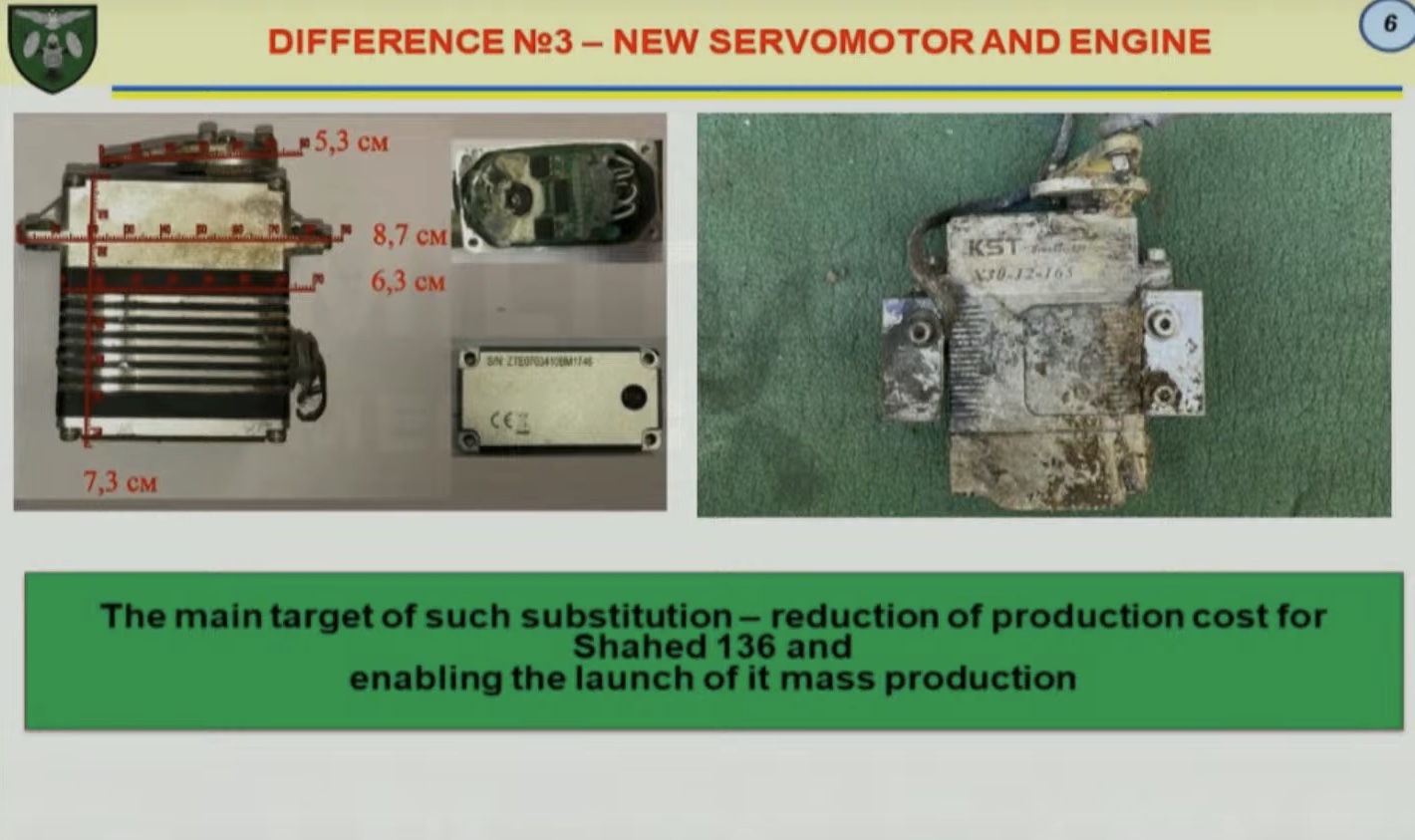
There has also been a redesign to drone bodies. The new Shahed drones have composite bodies filled with solid foam-like material as opposed to modular bodies with a honeycomb cell-like structure.
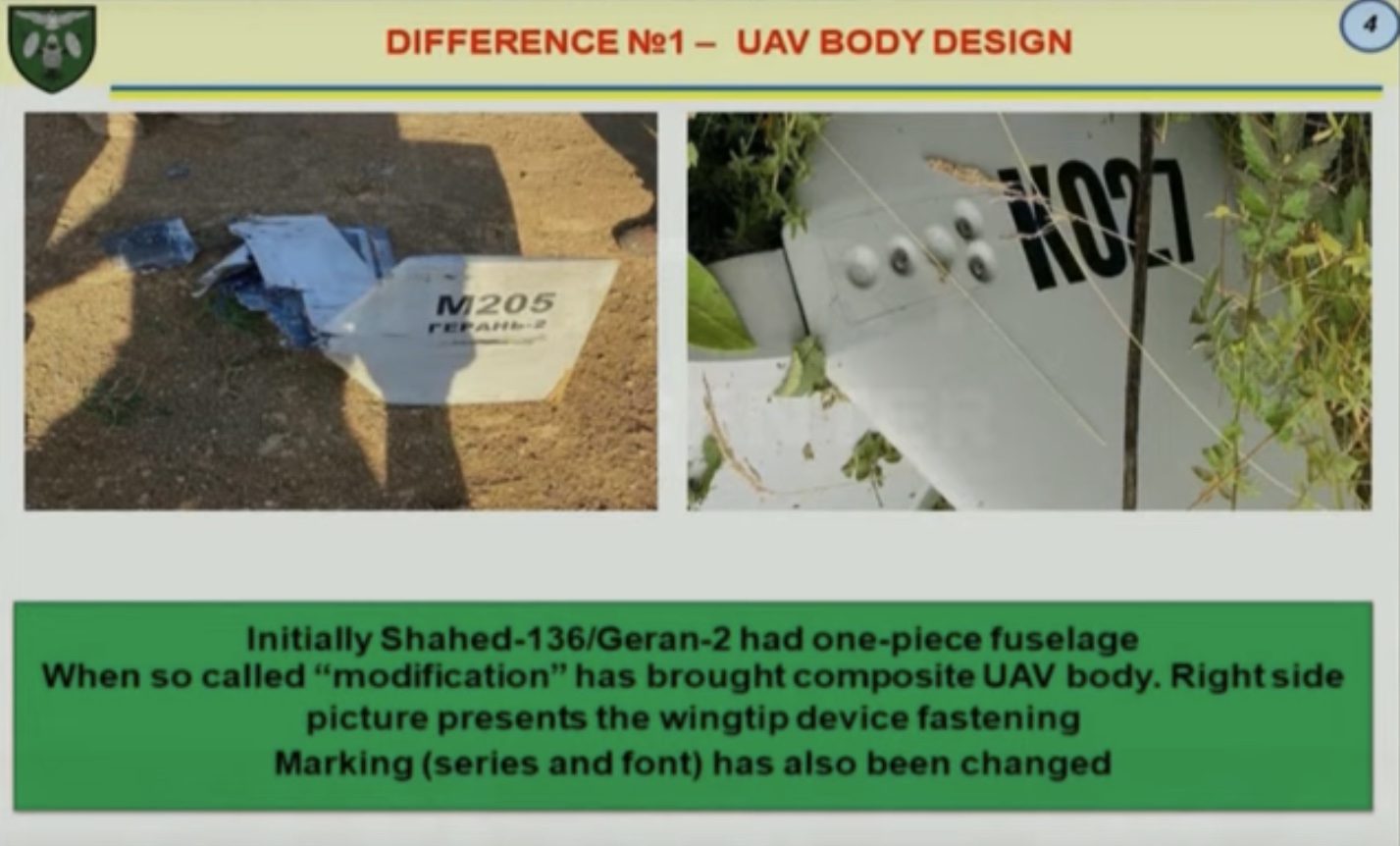
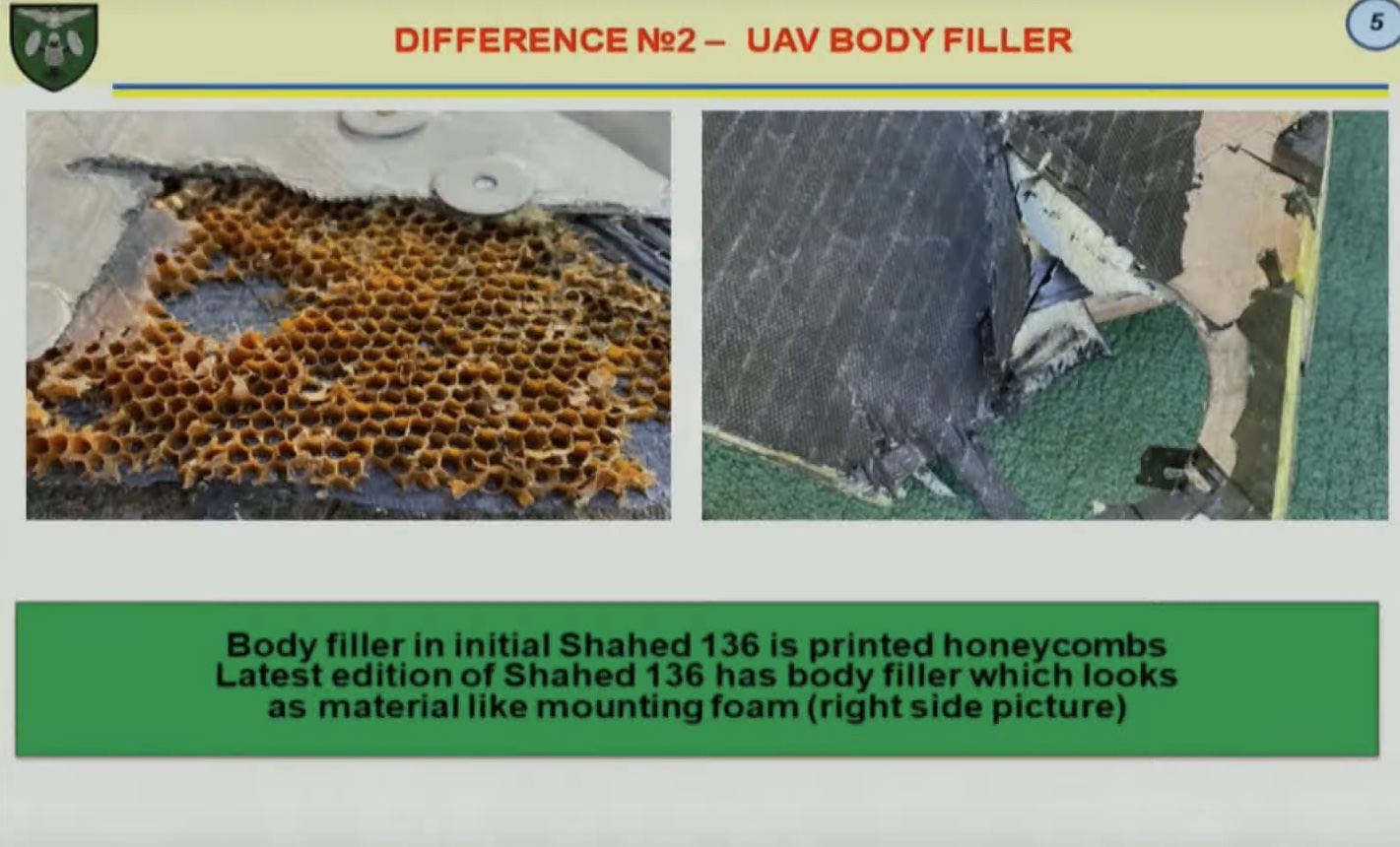
Russian-made batteries are also included now, Rudyk said, adding that the use of these Russian components indicates Moscow is trying to rely more on domestic production. That’s a similar analysis to one made in August by Ukraine’s Defense Intelligence (GUR) Directorate.
At the time, the increased use of Russian components was considered an indication that Russia was moving closer to its goal of producing the deadly drones domestically, rather than by purchasing them outright from Iran, GUR Maj. Gen. Vadim Skibitsky said, according to the Ukrainian RBC news outlet.
Earlier in August, we published new details about a Russian plan to domestically manufacture Iranian Shahed-136 drones, which Russia calls the Geran-2. The drones will be built in a facility 500 miles east of Moscow in the Tatarstan region with a goal of building 6,000 drones by summer 2025. You can read more about that in our story here.
“Previous data from the GUR indicate that the enemy planned to produce 1,300 units of the so-called ‘Geran-2,’” RBC reported at the time. “For them, it is planned to use components for both foreign and own production. However, in reality, Russia is not able to produce such a number of UAVs, Skibitsky noted.”
Thursday afternoon, GUR commander Lt. Gen. Kyrylo Budanov told us that to date, the majority of drones Russia is using are still being imported from Iran. Next month, Russia will get 280 Shaheds from Iran, Budanov noted. He did not have figures for September.
It is the nature of conflict, especially this one, for weapons systems to undergo frequent improvement. Though Rudyk said most of the changes to the Shahed drones are cosmetic with no increase in performance, the fact that they now have tungsten balls in the warhead and a new guidance system likely means a very troublesome weapon has become even more dangerous. Add in the apparent increase in their availability and the threat level has increased on several levels.
More Shaheds at its disposal also means Russia can continue to force Ukraine to expend its precious, and in most cases, far more expensive air defense munitions trying to shoot them down.
A Shahed-136 costs about $20,000 a piece to make, The New York Times has stated. Meanwhile, a single donated AIM-120 Advanced Medium-Range Air-to-Air Missile (AMRAAM) fired by donated National Advanced Surface-to-Air Missile Systems (NASAMS) costs roughly between $500,000 and a $1 million, depending on the variant and when it was produced.
That’s a severe imbalance that only threatens to get worse as Russia ramps up its domestic production in the coming years.
Having an ample supply of Shahed-136s also means Russia can keep up its aerial onslaught on Ukraine beyond the front lines without expending whatever cruise and short-range ballistic missiles it has left. The steady supply of Shaheds also means that, as the Ukrainian Air Force’s spokesman posited, Russia will likely have another go at destroying Ukraine’s energy infrastructure this winter in an effort to freeze out its populous.
Shahed-136’s rapid evolution, spurred by Russia’s all-out invasion of Ukraine, has also likely accelerated the development of distinct iterations of the type. Just last week Iran unveiled a jet-powered Shahed-136. While it will suffer in range, it will be much faster and more survivable.
Considering the long reach of the Shaheds is not necessary for many targets in Ukraine, the tradeoff could be a positive one in some circumstances. It will be interesting to see if jet-powered Shaheds end up on the battlefield in Ukraine anytime soon.
Contact the author: howard@thewarzone.com
